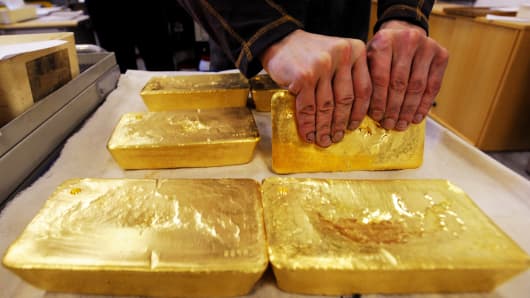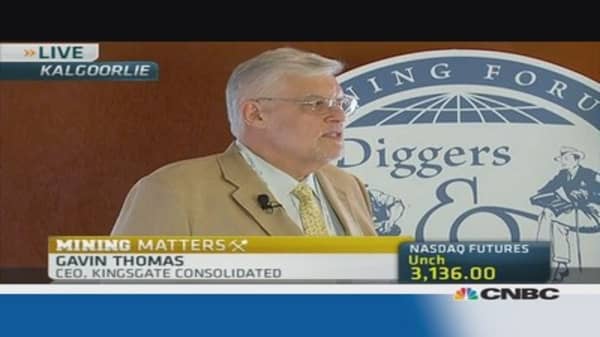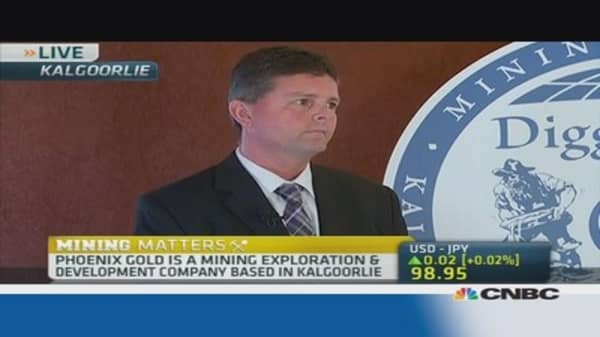The recent crash in gold prices has triggered widespread concerns over the future of the bullion market, but mining executives in Australia insist that the industry is not in "dire straits."
According to Gavin Thomas, CEO of Kingsgate Consolidated, which operates gold mines in Thailand, Australia and South America, even though gold prices are down sharply, they are back at levels seen in 2010, when the company was "very profitable."
"The Australian gold industry isn't as well off as it used to be, but it's not in dire straits," Thomas told CNBC at the sidelines of the annual Diggers and Dealers conference in Australia.
(Read More: No 'Armageddon' for miners: Western Australia Premier)
Executives argue that a weak Australia dollar has helped to offset the falling gold prices, which are sold in dollars. Gold is currently trading at $1302 an ounce, down from $1600 a year ago. When repatriated in Australian dollar terms, an ounce will sell for 1,461 Aussie dollars.
"We see a different perspective on the Australian gold industry because of the weaker currency," said Jake Klein, executive chairman at gold producer Evolution Mining, which is partly owned by Australia's biggest gold miner Newcrest.






